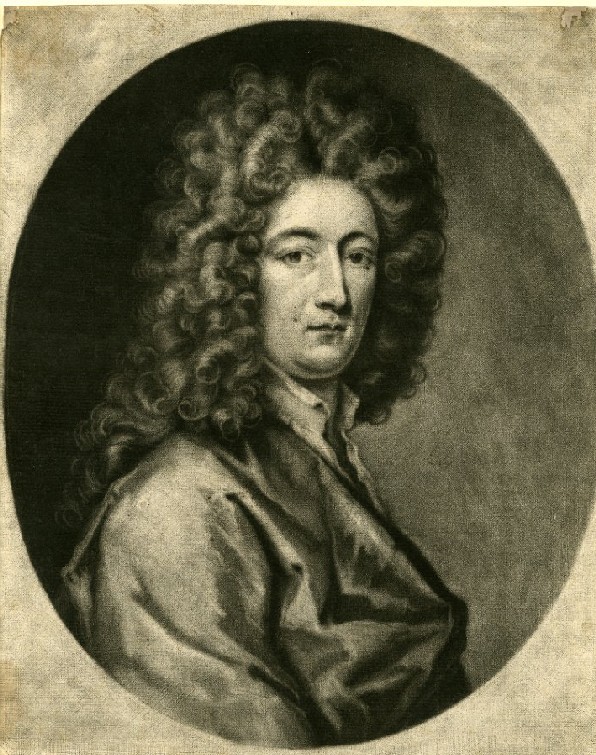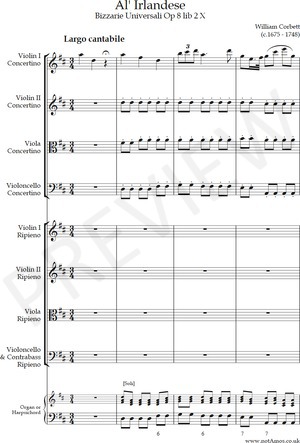 notAmos Performing Editions 1 Lansdown Place East, Bath BA1 5ET, UK +44 (0) 1225 316145 Performing editions of pre‑classical music with full preview/playback and instant download |
Violin I Concertino part (PDF), €1.00 for unlimited copies Buy this item
Violin II Concertino part (PDF), €1.00 for unlimited copies Buy this item
Viola Concertino part (PDF), €1.00 for unlimited copies Buy this item
Violoncello Concertino part (PDF), €1.00 for unlimited copies Buy this item
Violin I Ripieno part (PDF), €1.00 for unlimited copies Buy this item
Violin II Ripieno part (PDF), €1.00 for unlimited copies Buy this item
Viola Ripieno part (PDF), €1.00 for unlimited copies Buy this item
Violoncello & Contrabass Ripieno part (PDF), €1.00 for unlimited copies Buy this item
Organ or Harpsichord part (PDF), €1.00 for unlimited copies Buy this item
Printable cover page (PDF), €0.00 for unlimited copies Download this item
Score, part(s) and cover page (PDF), €13.30 for bundled copies Buy this item
If you have any problem obtaining a PDF, please see our help page. If that does not resolve the issue, please click here.
Click on the illustration to display a larger version
For licensing/copyright information please click here
| Enquire about this score |
| About William Corbett |
| Full Catalogue |
| About us | Help, privacy, cookies |
| About William Corbett |
| Full Catalogue |
| About us | Help, privacy, cookies |
Largo cantabile - Allegro - Largo - Allegro spiritoso
Corbett was associated with English theatre orchestras throughout his career, but spent the middle years settled in Rome. His return from abroad with a collection of instruments and music, as expensive as it was extensive, and reputedly well beyond his means, prompted speculation, retailed by Sir John Hawkins (in the absence of H.M.R.C. capital statements), that he had been employed covertly by the English government and that "his business at Rome was to watch the motions of the Pretender".
Corbett's notion was to publish thirty-five concertos in three books, under the collective title of "Universal Bizzaries", "compos'd upon all the new Gusto's during his many years residence in Italy". Hawkins did not criticise the epithet "new", although the concertos were some thirty years old at the time of the last printing. Rather, he reserved his ire for the claim to reflect divers Gusto's: "This proposal was ridiculous. For in music, generally composed according to the principals generally known and received, there can be no such discrimination of style as will enable the hearer to distinguish the music of one country, much less one city, from another". Modern critics would acknowledge the existence of national and regional styles, yet would allow that, in Corbett's versions, Turks, Portuguese, Irish and Muscovites all appear to have communicated in monoglot Italian with a pronounced Bolognese (Corellian) accent.
Hawkins also observes that the publication was issued very cheaply, and was commercially unsuccessful. In my experience, it is the second most poorly proof-read musical offering ever offered to the public. Printed anonymously for the author, parts appeared in two different versions (four parts and latterly seven) and in printings covering three decades. Layering and articulation directions are sometimes implausible and are often inconsistent in identical phrases between different parts, and even in reiterated phrases within the same part. The present edition attempts a synthesis of most likely articulations for each phrase, and the imposition of consistency between all parts. It is entirely possible that, in the extirpation of eccentric slurring, the distinctive articulation of the more obscure Gusto's has been effaced. Concertino viola and cello parts have been added editorially, to make Corbett's layering more explicit.
Corbett described the concertos as "also contrived for Violins, German-flutes or Hautboys". A trio sonata version is also offered, based on the concertino instruments with continuo.
Corbett was associated with English theatre orchestras throughout his career, but spent the middle years settled in Rome. His return from abroad with a collection of instruments and music, as expensive as it was extensive, and reputedly well beyond his means, prompted speculation, retailed by Sir John Hawkins (in the absence of H.M.R.C. capital statements), that he had been employed covertly by the English government and that "his business at Rome was to watch the motions of the Pretender".
Corbett's notion was to publish thirty-five concertos in three books, under the collective title of "Universal Bizzaries", "compos'd upon all the new Gusto's during his many years residence in Italy". Hawkins did not criticise the epithet "new", although the concertos were some thirty years old at the time of the last printing. Rather, he reserved his ire for the claim to reflect divers Gusto's: "This proposal was ridiculous. For in music, generally composed according to the principals generally known and received, there can be no such discrimination of style as will enable the hearer to distinguish the music of one country, much less one city, from another". Modern critics would acknowledge the existence of national and regional styles, yet would allow that, in Corbett's versions, Turks, Portuguese, Irish and Muscovites all appear to have communicated in monoglot Italian with a pronounced Bolognese (Corellian) accent.
Hawkins also observes that the publication was issued very cheaply, and was commercially unsuccessful. In my experience, it is the second most poorly proof-read musical offering ever offered to the public. Printed anonymously for the author, parts appeared in two different versions (four parts and latterly seven) and in printings covering three decades. Layering and articulation directions are sometimes implausible and are often inconsistent in identical phrases between different parts, and even in reiterated phrases within the same part. The present edition attempts a synthesis of most likely articulations for each phrase, and the imposition of consistency between all parts. It is entirely possible that, in the extirpation of eccentric slurring, the distinctive articulation of the more obscure Gusto's has been effaced. Concertino viola and cello parts have been added editorially, to make Corbett's layering more explicit.
Corbett described the concertos as "also contrived for Violins, German-flutes or Hautboys". A trio sonata version is also offered, based on the concertino instruments with continuo.

